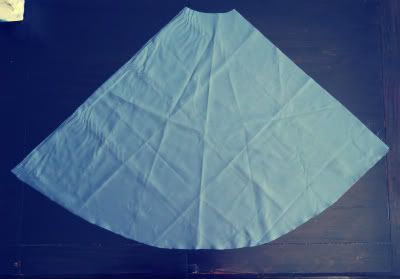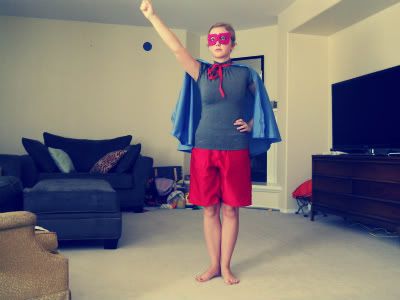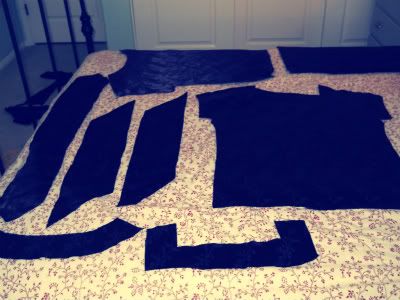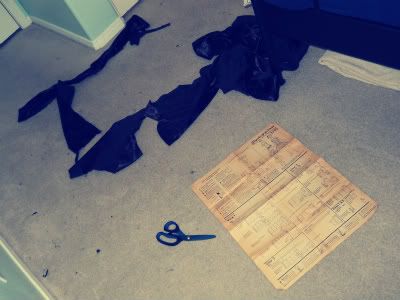Here is how to join the mini blocks together into one big block. Each full block needs seven mini blocks of the same color. See what I mean about the pin wheels all going the same direction?
1. Grab two blocks and put them right side together. It's easiest if you start with the center mini block and go around in a circle. Make sure that you are sewing the right seams together, because there's 6 sides to each mini block remember.
2. You have to make sure to pin in the middle again this time so that the points of the little white triangles will match up. I'm kind of a perfectionist so this is important to me.
3. With the first two mini blocks, you'll only have to sew one side together. But for the rest, you'll have to sew two sides together. And then 3 sides on the last mini block. When you have to sew more than one side, don't tie a knot at the end of each seam. Just push the needle through to the next side. (Make sure the second side matches up).
4. Now you have a full block! See what I mean about the points of the little white triangles matching up?
*************************************************
If you missed Parts 1 and 2 of the tutorial, here they are!
http://lexichan.blogspot.com/2013/06/kansas-twister-tutorial-part-1.html
http://lexichan.blogspot.com/2013/06/kansas-twister-tutorial-part-2.html
************************************************
Here's an real antique version of the Kansas Twister quilt if you wanted to arrange the pinwheels this way. Just an idea.
Click HERE
*************************************************
If you missed Parts 1 and 2 of the tutorial, here they are!
http://lexichan.blogspot.com/2013/06/kansas-twister-tutorial-part-1.html
http://lexichan.blogspot.com/2013/06/kansas-twister-tutorial-part-2.html
************************************************
Here's an real antique version of the Kansas Twister quilt if you wanted to arrange the pinwheels this way. Just an idea.
Click HERE
*************************************************
Sister Mommies featured my blog post! Check it out!
http://sistermommies.wordpress.com/2013/06/26/mommies-that-inspire-alexa-price/


























